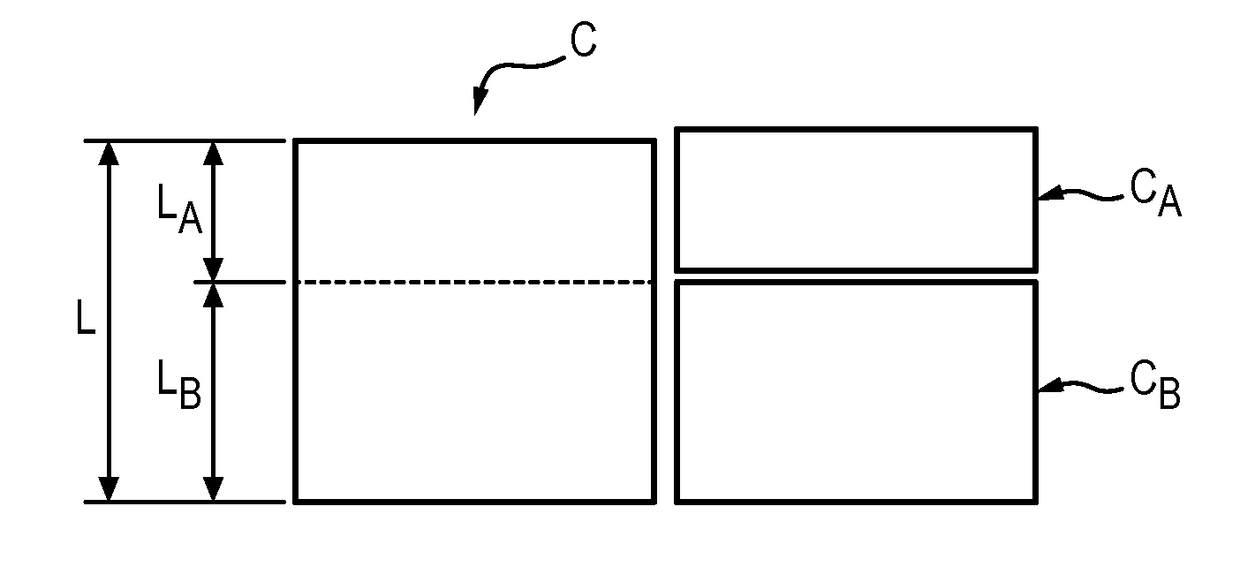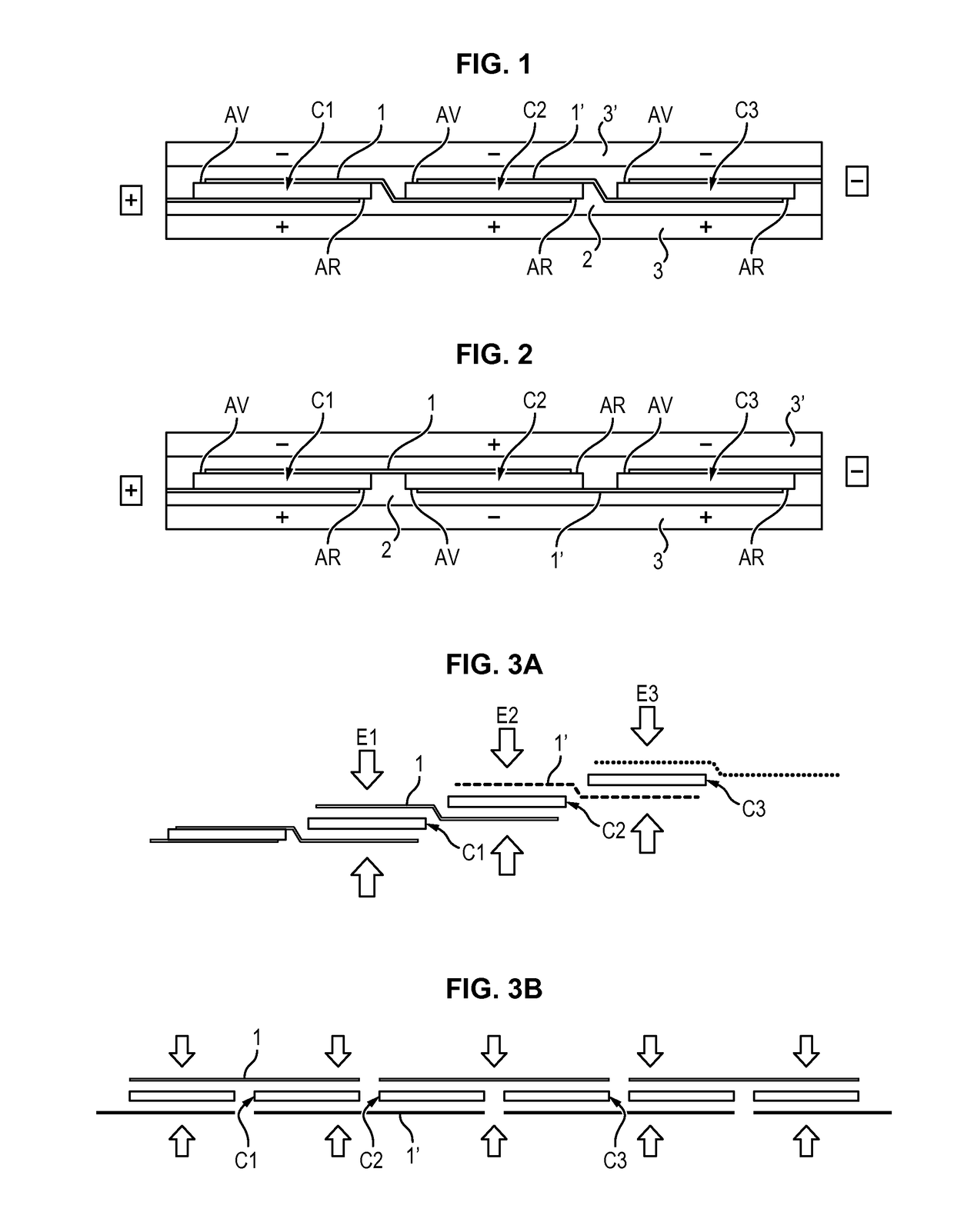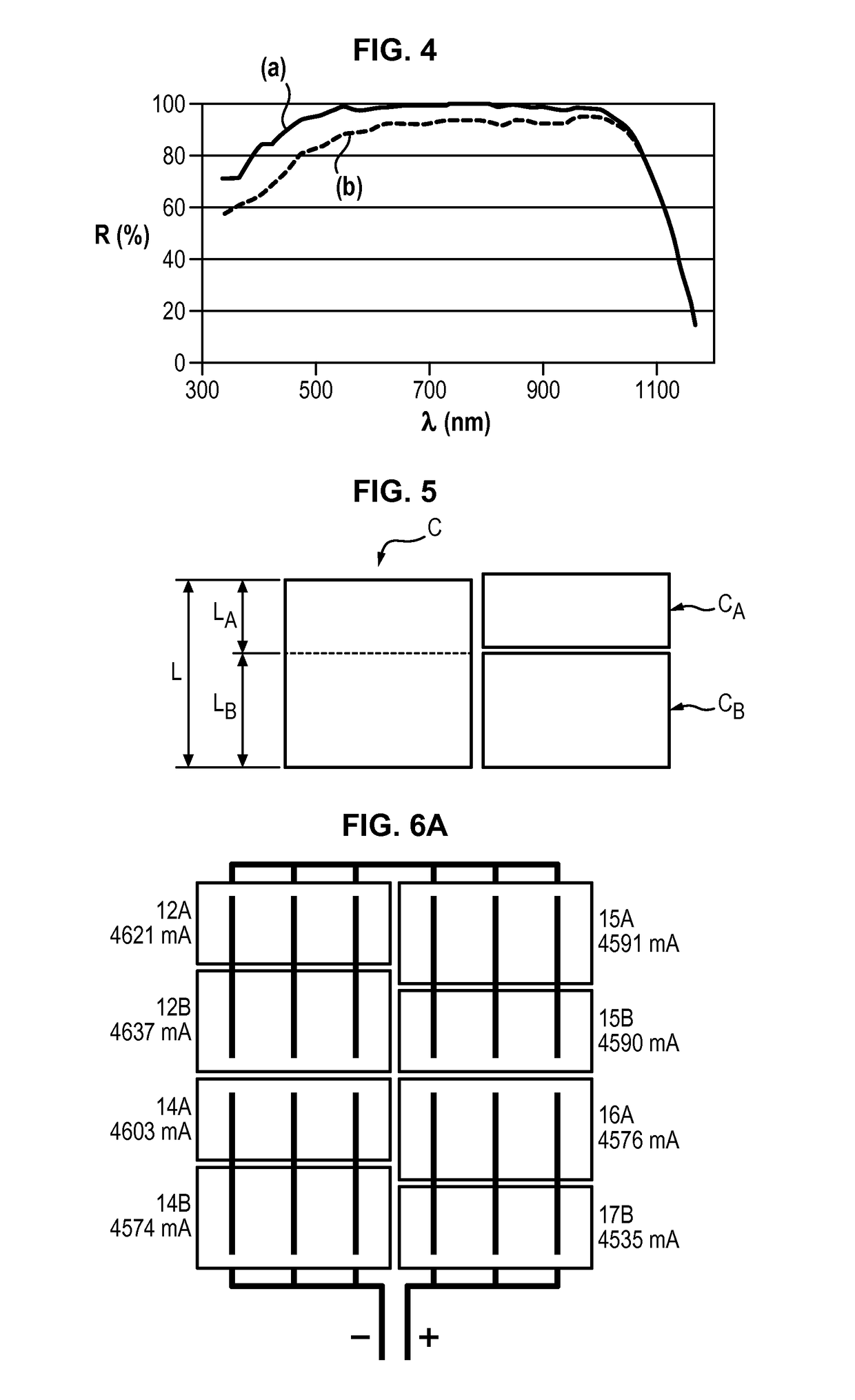Photovoltaic module comprising a plurality of bifacial cells and method for producing such a module
a photovoltaic module and bifacial cell technology, applied in the direction of basic electric elements, electrical apparatus, semiconductor devices, etc., can solve the problems of electrical (interconnection breakage) or mechanical (fissuring) failure of said modul
- Summary
- Abstract
- Description
- Claims
- Application Information
AI Technical Summary
Benefits of technology
Problems solved by technology
Method used
Image
Examples
Embodiment Construction
[0062]The method for producing a photovoltaic module includes the successive steps described hereafter.
[0063]The photovoltaic module is intended to be produced by monolithic assembly of a plurality of bifacial cells. Said photovoltaic module has a front face and a rear face.
[0064]Firstly, from a batch of bifacial cells intended to form the module, the short-circuit current (noted Isc, expressed in mA) is determined for each of the faces of the cell. By convention, the front face (FAV) of the cell is the face of the cell for which the short-circuit current Isc is the largest and the rear face (FAR) of the cell is that for which the short-circuit current is the smallest of the two measured. The short-circuit current ratio B between the rear face and the front face is deduced from these measurements.
[0065]As an example, table 1 below illustrates the properties of the front face and of the rear face of a batch of nine cells.
[0066]The physical quantity Voc designates the voltage of the o...
PUM
 Login to View More
Login to View More Abstract
Description
Claims
Application Information
 Login to View More
Login to View More - R&D
- Intellectual Property
- Life Sciences
- Materials
- Tech Scout
- Unparalleled Data Quality
- Higher Quality Content
- 60% Fewer Hallucinations
Browse by: Latest US Patents, China's latest patents, Technical Efficacy Thesaurus, Application Domain, Technology Topic, Popular Technical Reports.
© 2025 PatSnap. All rights reserved.Legal|Privacy policy|Modern Slavery Act Transparency Statement|Sitemap|About US| Contact US: help@patsnap.com



